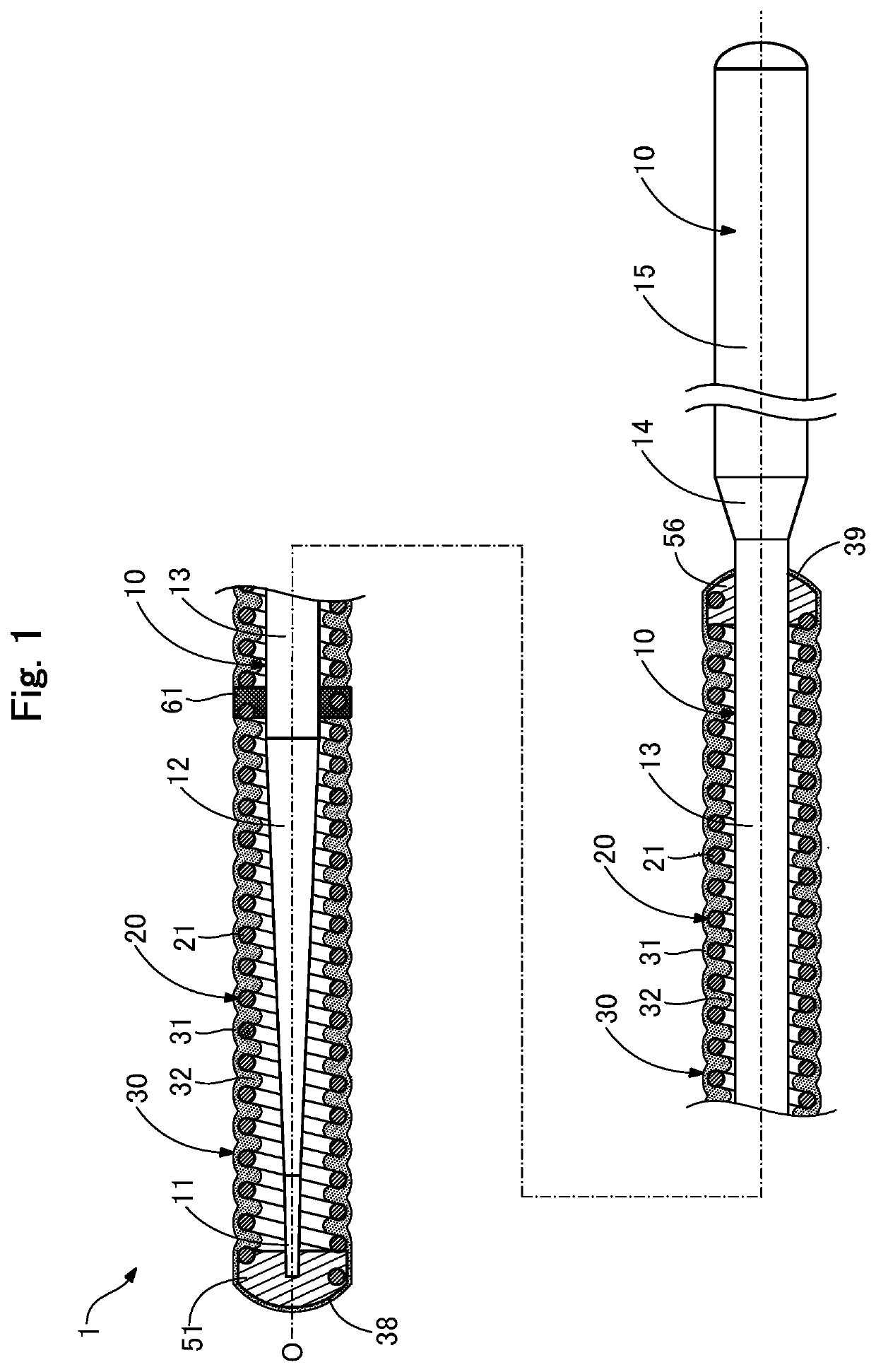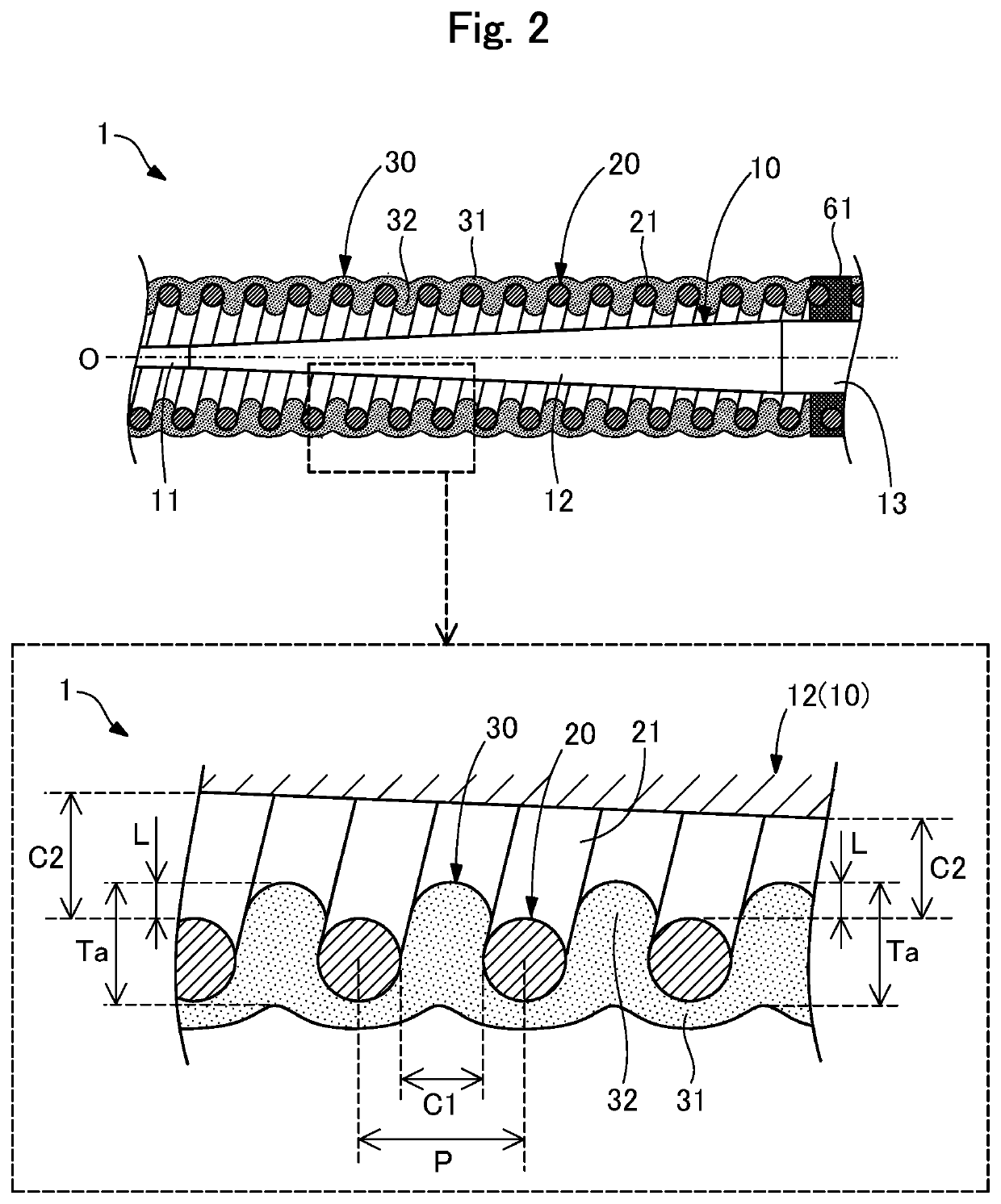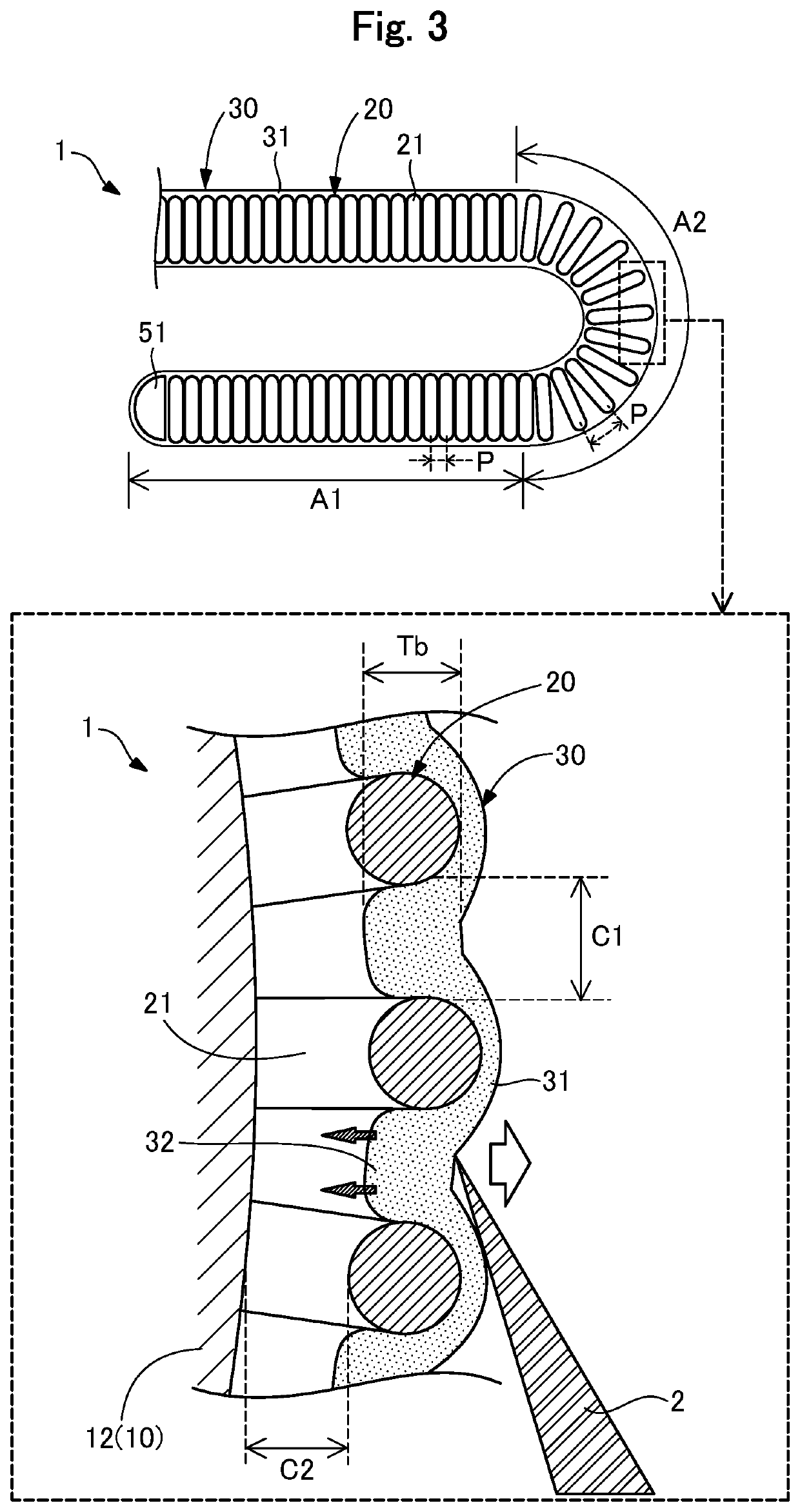Guide wire
a technology of guide wires and wires, applied in the direction of guide wires, etc., can solve the problems of peeled or damaged resin layers, peeling or damage of resin layers, and insufficient flexibility of guide wires, so as to reduce the power required to curve the guide wire, easy to move, and prevent peeling and damage of resin layers
- Summary
- Abstract
- Description
- Claims
- Application Information
AI Technical Summary
Benefits of technology
Problems solved by technology
Method used
Image
Examples
first embodiment
[0028]FIG. 1 is a schematic partial cross-sectional view illustrating an entire configuration of a guide wire 1 according to a first embodiment. The guide wire 1 is a medical device used when a catheter is inserted into a blood vessel or a digestive organ, and includes a core shaft 10, a coil body 20, a resin layer 30, a distal end joint part 51, a proximal end joint part 56, and an intermediate fixing part 61.
[0029]In FIG. 1, an axis passing through the center of the guide wire 1 is represented by an axis O (the dash-dot-dash line). The left side in FIG. 1 is referred to as a “distal end side” of the guide wire 1 and components, and the right side in FIG. 1 is referred to as a “proximal end side” of the guide wire 1 and components. Further, with respect to the guide wire 1 and components, an end part located on the distal end side is referred to as a “distal end part” or simply a “distal end,” and an end part located on the proximal end side is referred to as a “proximal end part” ...
second embodiment
[0053]FIG. 5 is a partial enlarged view of a guide wire 1a according to a second embodiment. In the guide wire 1a according to the second embodiment, a resin layer 30a includes protruding portions 32a. Such a protruding portion 32a is formed so that a protrusion distal end of the protruding portion 32a (a portion closest to the core shaft 10) comes into contact with the core shaft 10. The shape of a protrusion of the protruding portion 32a in the cross section illustrated in FIG. 5 is an elliptical arc shape. The protruding portion 32a may be formed by using a material and manufacturing method similar to those of the protruding portion 32 according to the first embodiment.
[0054]The protruding length L of the protruding portion 32a in the guide wire 1a is equal to the size of the void C2 between the wire 21 and the core shaft 10. Thus, the thickness Ta of the resin layer 30a can be made thicker than that in the guide wire 1 according to the first embodiment. All of the protruding por...
third embodiment
[0058]FIG. 7 is a partial enlarged view of a guide wire 1b according to a third embodiment. In the guide wire 1b according to the third embodiment, a resin layer 30b includes protruding portions 32b. A protrusion distal end of such a protruding portion 32b is joined to the core shaft 10. The shape of a protrusion of the protruding portion 32b in the cross section illustrated in FIG. 7 is a substantially rectangular shape in which a diameter of the center portion is reduced. The protruding portion 32b may be formed of a material similar to that of the protruding portion 32 according to the first embodiment. The protruding portion 32b may be formed, for example, by applying an adhesive such as an epoxy-based adhesive to the outer peripheral surface of the core shaft 10 and then applying a liquidized resin material from the outer peripheral surface of the coil body 20. When the resin material is applied, the resin material is allowed to flow from the gap C1 of the coil body 20 to reach...
PUM
 Login to View More
Login to View More Abstract
Description
Claims
Application Information
 Login to View More
Login to View More - R&D
- Intellectual Property
- Life Sciences
- Materials
- Tech Scout
- Unparalleled Data Quality
- Higher Quality Content
- 60% Fewer Hallucinations
Browse by: Latest US Patents, China's latest patents, Technical Efficacy Thesaurus, Application Domain, Technology Topic, Popular Technical Reports.
© 2025 PatSnap. All rights reserved.Legal|Privacy policy|Modern Slavery Act Transparency Statement|Sitemap|About US| Contact US: help@patsnap.com



